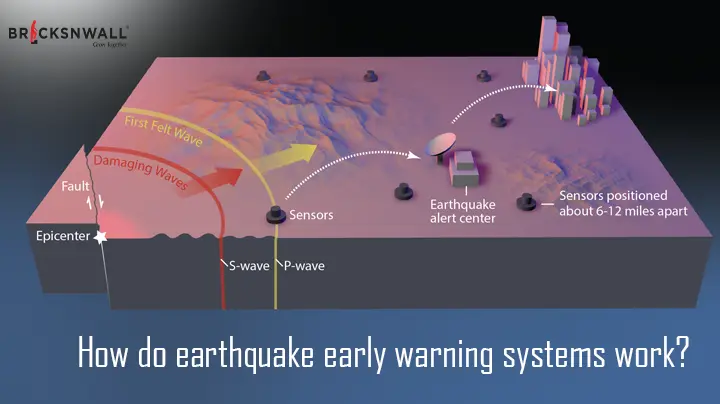How do earthquake early warning systems work?
Bricksnwall Trusted Experts

Would you
know what to do if an earthquake struck while you were at work? at home?
at gym?
Earthquake
safety researchers want the answer to these questions to be "yes."
Over the
last few years, the United States has implemented ShakeAlert, an earthquake
early warning system for the West Coast. When an earthquake happens, real-time
data from seismometers is used to assess the magnitude of the earthquake and
the locations that will be affected. Individuals and facilities that are likely
to experience strong shaking are then automatically notified. The system is
intended to provide individuals with just a few seconds to defend themselves
before seismic waves arrive; thus everything must happen rapidly for an alarm
to be meaningful.
But
what should people do once they've received the warning?
Creating a
rapid-fire warning system was a technological marvel, but understanding how
people react during an earthquake and what behaviors reduce their chance of
damage presents a whole other set of issues, as researchers detailed in a
recent study regarding the best recommendations to pair with ShakeAlert.
A concise
message
According to
several research, people who have never experienced an earthquake are more
inclined to freeze or run. They may take a break to observe what others are
doing. However, in the event of a big earthquake, a few seconds of uncertainty
could be costly. To be most effective, an alert must be followed with guidance.
"We
know that if a warning is issued without providing people with actionable
information about what to do, the alert will be less effective," says Sara
McBride, the main author of the study and a social scientist at the US
Geological Survey. "Providing an alert with no advice is not really an
option."
The problem
is determining how to provide clear direction to 50 million individuals on the
West Coast who are in different places, doing different things, and have varied
talents.
McBride and
colleagues gathered injury data from a variety of research and locales. The
dangers of earthquakes vary based on building construction, earthquake type,
and even the time of day or season when the earthquake occurs. Previous
research has found that women are more likely to be hurt than men, probably
because they are more likely to be carers and may move around to help children
during shaking.
Inconsistent
data collecting is one difficulty to determining what causes injuries during an
earthquake; after an earthquake, figuring out what an injured person was doing
isn't as vital as providing them treatment. Scientists must also adhere to
ethical data-gathering norms and take trauma into account.
As a result,
this data can be unavailable and acquired over a wide range of time periods,
complicating easy conclusions.
Tripping and
falling while moving, things falling and flying, and the collapse of building
exteriors such as windows and facades have been among the most prevalent causes
of injury during earthquakes in the United States. A widespread misperception
is that a doorway is a good location to go; however, entrances are not a
stronger section of the building and do not shield you from flying debris.
According to
McBride and colleagues' research, the best phrase to accompany an alarm is
"Drop, Cover, Hold On." Getting low to the ground and under a strong
table or desk can shield people from falling objects.
This message
is repeated every year during the Great ShakeOut, the world's largest
earthquake drill, conducted every October. It has also been modified to account
for different skill levels; for example, a wheelchair user should presumably
not drop, but rather lock their wheels, cover their head, and hold on.
Although
there is no one perfect solution for every event, planning and practicing your
actions ahead of time gives you the best chance of surviving.
It is not a
universal message.
The
"Drop, Cover, Hold On" warning has also been adopted by Japan and New
Zealand. In countries with more susceptible buildings, such as Haiti, officials
have decided that evacuation is a better bet. The guidance in Mexico City,
which developed the first earthquake early warning system in 1991, is
location-based. Is living on the first or second floor preferable? Evacuate.
Greater levels? Drop, cover, and hang on.
A geologist at Oregon State University who was not involved in the study emphasizes the importance of individuals knowing the buildings in which they live. Many buildings in Oregon and Washington were constructed before strict earthquake rules were implemented, or perhaps before the Pacific Northwest was recognized as being at risk of a big earthquake. If someone is in a building that is about to collapse and is close to a doorway, Goldfinger believes that getting out is a better option than 'Drop, Cover, Hold On'.




